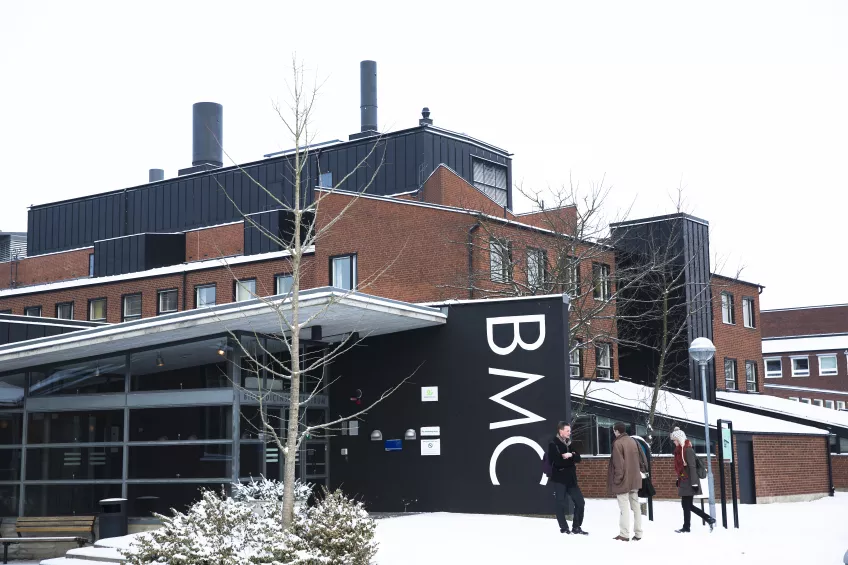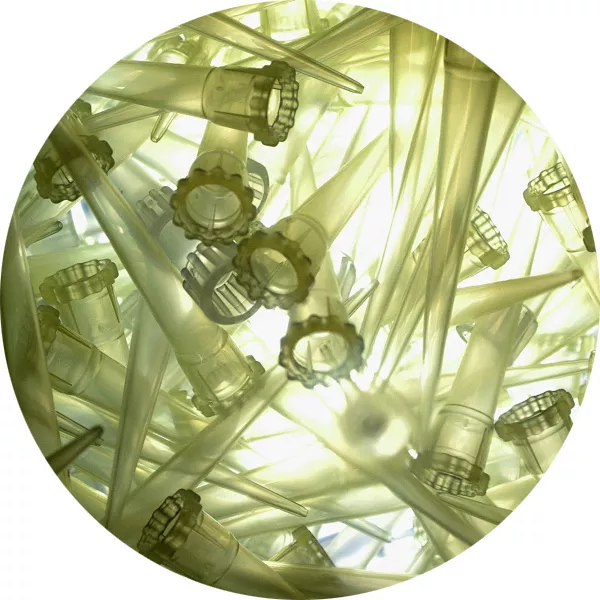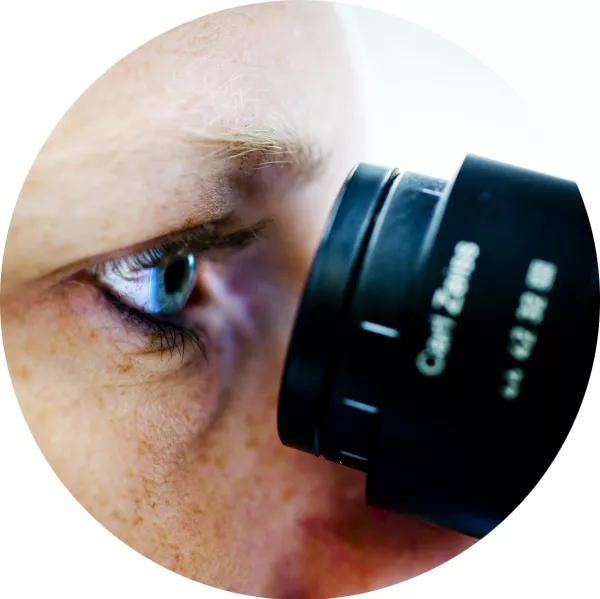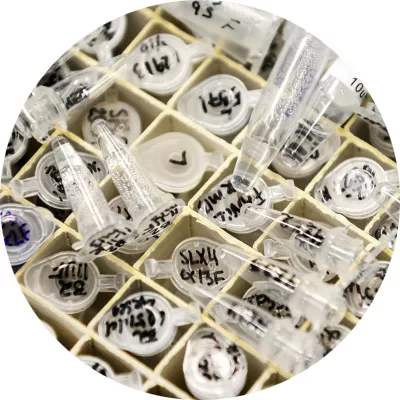UniStem workshops 2015
Här hittar ni de "Prova på aktiviteter" och workshops som ni har möjlighet att anmäla er till under UniStem-eftermiddagen.
Populärvetenskapliga bilder av stamceller
Ansvarig: Kristofer Hansson, Ellen Suneson (Institutionen för kulturvetenskaper)
Antal studenter: ca 15
Beskrivning: Genom TV, tidningar och internet möter allmänheten de biomedicinska forskarnas framsteg inom dagens stamcellsforskning. Det är härigenom som allmänheten kan bilda sig en egen uppfattning om den biomedicinska forskningen. Samtidigt blandar medierna många gånger fakta med fiktion. Hur ska vi förhålla oss till detta?
Nya möjligheter för att söka och få tillgång till medicinska behandlingar
Ansvariga: Niclas Hagen, Marsanna Petersen
Antal studenter: ca15
Beskrivning: I dagens globaliserade och digitala samhälle så har möjligheterna för tillgång till medicinska behandlingar som ännu befinner sig på experimentstadiet ökat. I många fall så erbjuder den svenska sjukvården inte dessa behandlingar eftersom deras medicinska verkningsgrad ännu inte är bevisad. Till exempel kan individer idag resa utomlands och köpa stamcellsbehandlingar vars förmåga till bot och lindring för svåra sjukdomstillstånd är högst osäker eller rent av obefintlig. Hur ska vi förhålla oss till dessa möjligheter? Och hur hade vi själv resonerat kring att söka alternativa experimentella stamcellsbehandlingar om vi hade drabbats av en obotlig sjukdom?
Human stem cell research: Ethical and legal aspects
Ansvarig: Kristina Hug
Språk: Engelska
Antal studenter: ca 15
Beskrivning: Ethical issues in human embryonic stem cell research. Legal regulation in Europe regarding human embryonic stem cell research. Ethical issues in translational stem cell research. Diversity of religious approaches regarding stem cell research.
Bioinformatics and it's role in research
Ansvarig: Stefan Lang
Språk: Engelska
Antal studenter: 6
Beskrivning: Bioinformatics is the analysis of large biological datasets. This requires a strong interest in programming as well as biology, along with some mathematics and statistics. We will give an overview of the field, and demonstrate our recent project to develop a webtool that analyses data from single cells.
Purifying stem cells: Cell Sorting Stem Cell with Flow Cytometers
Ansvarig: Teona Roschupkina, Zhi Ma
Språk: Engelska
Antal studenter: 6
Beskrivning: We would like to introduce interested students to the techniques of cell sorting the stem cells and obtaining the pure populations. 30 min -The technology is based on basic principles of Physics and Biology. Those principles will be explained in front of the instrument and students will be invited handle machine components and actively participate in demonstration of cell sorting. BMC, B1241a
15 min-We then move to the adjacent conference room and student will be able to pose questions regarding the technique. BMC, B1244b.
FACS analys av vita blodkroppar i mjälten
Ansvarig: Charlotta Böiers, Mehrnaz Safaee Talkhoncheh
Antal studenter: 6
Beskrivning: Vita blodkroppar utgör vårt immunförsvar och finns bland annat i blod och mjälte. Eleverna kommer att få färga in celler från mjälte med olika ytmarkörer som är specifika för våra olika vita blodkroppar. De kommer sedan att få köra provet i en flödes cytometer och med hjälp av färgingen avgöra vilka celler som är B/T celler och neutrofiler/monocyter
Finding blood stem cells in the mouse embryo
Ansvarig: Alya Zriwil, Lilian Wittmann
Språk: Engelska
Antal studenter: 5
Beskrivning: Our white blood cells are produced in bone marrow in the adult and in the fetal liver in the embryo. In our lab, part of our work is focused on studying the development of those cell sin the mouse embryo. In this hands-on activity, you will have the chance to observe and perform the dissection of mouse embryos. With this, you will discover where we can find blood stem cells at the early stage of life.
Hematopoietic Stem Cells in Mouse Bone Marrow
Ansvarig: Patricia Chaves Guerrero, Lilian Wittmann
Språk: Engelska
Antal studenter: 5
Beskrivning: We will isolate hematopoietic cells from mouse bones. We will put these cells in slides (cytospin) and show how we stain them to see the different morphologies. Using a microscope, we will look at the slides and identify blood cell progenitors as well as the different mature blood populations.
Behavioural assessment of neural stem cell transplants – from animal models to functional assessment
Ansvarig: Andreas Heuer, Malin Parmar, Michael Sparrenius
Språk: Engelska
Antal studenter: 12-16
Beskrivning: In this workshop we will present how researchers assess neural stem cells in vivo. We will give an introduction about research on laboratory animals, how we create models of neurodegenerative diseases, and how to assess the neural stem cells in vivo. The focus is on Parkinson’s disease and the transplantation of cells into the brain of rodents. After the workshop the student will have a basic idea about the animal models used for transplantation, how to assess graft survival and the immune-response, as well how a neural stem cell transplant can improve the behaviour of a rodent that has been rendered parkinsonian. The workshop will be based on presentations of the most commonly used behavioural test as well as some equipment. Due to the restricted nature of animal testing the practical part of the session will be limited.
Snitta en hjärna och hitta ett transplantat
Ansvarig: Malin Parmar, Ulla Jarl
Antal studenter: 6-8
Beskrivning: Ni kommer att få se hur man snittar en hjärna och hur man sen märker in den med speciella antikroppar för att kunna visualisera transplanterade stamceller. I mikroskopet letar vi sen upp cellerna och tittar på hur de transplanterade cellerna ser ut.
Induced pluripotency: Hacking the cellular machinery
Ansvarig: Carolina Guibentif, Shobhit Saxena
Språk: Engelska
Antal studenter: 10
Beskrivning: We will present the basics of induced pluripotency, its applications, and potential for regenerative medicine therapies. The workshop will comprise of: 1) a theoretical part and 2) laboratory overview, for providing the students insight into pluripotent stem cells in a laboratory setting.
Direct conversion of skin cells into neurons and microscopy
Ansvarig: Ulrich Pfisterer, Maria Pereira
Språk: Engelska
Antal studenter: 6
Beskrivning: This workshop will include a tour by the lab where cell culture is performed. In our lab, we reprogram skin cells into neurons. The students will be able to see the morphological changes that occur along the process in these cells, and get some insight about the procedures used for conversion (approximately 30 minutes). After that, they will have the chance to look at the cells at the stage where conversion is complete, under the fluorescence microscope (15 min).
Passera benmärgstromaceller
Ansvarig: Simon Hultmark och Mattias Magnusson
Antal studenter: 6
Beskrivning: Benmärgstromacellerna skapar en essentiell miljö för blodstamcellerna i kroppen. Vi studerar därför de signaler som dessa stromaceller producerar för att kunna lära oss att expandera blodstamceller utanför kroppen. Detta skulle kunna öka chanserna för blodstamcellstransplantation. Stromacellerna växer snabbt utanför kroppen och måste därför passeras innan de blir överväxta. I denna workshop kommer man att få lära sig grunderna I cellodlingskonstens ABC. (Passera och räkna celler).
Confocal microscopy
Ansvarig: Andreas Svensson, Francesca Romana Stefani
Språk: svenska
Antal studenter:
Beskrivning: We will have a short presentation of our research on brain tumors, and then go through the basics of confocal microscopy which is one of the main analysis methods used by our group. Confocal microscopy can be used to reconstruct a microscopy sample in three dimensions, which makes it possible to get very detailed images. It can, for example, be useful to determine if a certain element lies within or on top of a cell, or how several cells are aligned compared to each other. We will demonstrate one of the most modern confocal microscopes available and show tissue sections of mouse brains with brain tumors. We will look at overview pictures as well as high magnification pictures of single cells within the tumors, stained with immunofluorescence.
Patch clamp electrophysiology: Are the cells derived from stem cells functional?
Ansvarig: Tania Ramos Moreno, Marita Grønning Madsen
Språk: Engelska
Antal studenter:
Beskrivning: Introduction to patch clamp electrophysiology and the use in stemcell research. Demonstration of how patch clamp experiments are performed and insight into the following data interpretation.
Hur blir man stamcellsforskare?
Ansvarig: Göran Karlsson
Antal studenter: 20
Beskrivning: En föreläsning om hur det går till att doktorera och göra karriär inom medicinsk forskning och speciellt stamcellsbiologi. Föreläsarens egen karriär kommer att användas som exempel. Föreläsningen kommer att beskriva vilka grundutbildningar man kan gå, vilka vägar det finns in i forskningen, hur doktorandtiden ser ut, vad man kan göra sedan osv. Det kommer att finnas mycket utrymme för eleverna att ställa frågor om allt möjligt angående temat och det kommer att ges endel tips och råd.
Cutting into DNA, genetic engineering approaches for science and medicine
Ansvarig: David Yudovich, Ludwig Schmiderer
Språk: Engelska
Antal studenter: 8-10
Beskrivning: This workshop will give you an overview on how DNA can be used in a laboratory setting in the context of research and medicine. What is the application of DNA to current medicine? How do we design and build genetic structures and systems? How is this work relevant for near and long term future medical approaches? The workshop will start with a short lecture, followed by a game/competition of putting together so called DNA plasmids for various purposes.
How to make your viral vector do what you want
Ansvarig: Josephine Malmevik, Monika Matusiak-Brückner
Språk: engelska och svenska
Antal studenter: 15
Beskrivning: In this workshop, we will introduce you to the basic elements of a viral vector. We will then let you try out designing different vectors, for example one that you can use to make a stem cell into a neuron. This will help you understand the complexity of Molecular Biology - and how fun it can be!
Blood stem cells under the microscope
Ansvariga: Alexander Mattebo, Svetlana Soboleva
Språk: engelska
Antal studenter: 6
Beskrivning: If you ever wondered how stem cells look like under a microscope, or at this very moment realised that you do, this work shop is for you! You will get a look at live blood stem cells, as well as mature blood cells, under the microscope.
Gene expression analysis: Are you faster than a robot?
Ansvarig: Rebecca Petri, Karolina Pircs
Språk: engelska
Antal studenter: 6-8
Beskrivning: In this workshop we will give an introduction on gene expression and how we can measure it by using qPCR. Moreover, we will introduce our pipetting robot to the students. They will then have the possibility of practicing pipetting and challenging our robot.
Från vetenskaplig publikation till nyhetsinslag
Ansvarig: Katarina Branzén
Antal studenter: 6
Beskrivning: Hur arbetar vi för att nå ut med nyheter om vår forskning? Detta seminarium tar upp tillvägagångssättet, från vetenskaplig publikation till nyhetsinslag.





